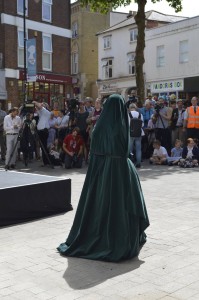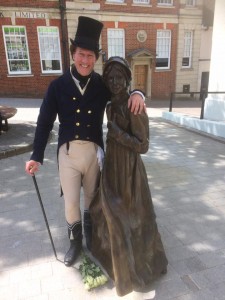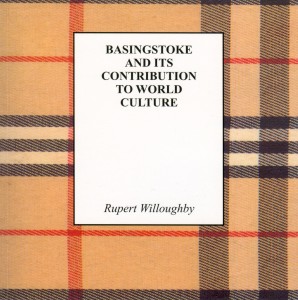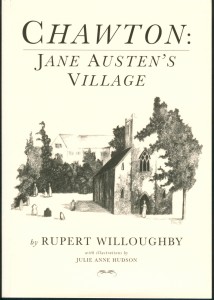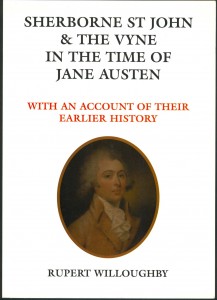In my 2010 monograph, Basingstoke and its Contribution to World Culture, I describe the ‘catastrophe’ that befell Basingstoke in the 1960s, when it was redeveloped, in the most vulgar fashion, as a ‘New Town’ fit for London ‘overspill’.
In ‘Even at Ulubrae’, the final chapter of my work, I ponder how the town might overcome its reputation for ‘rampant philistinism’. My first suggestion is that an elegant portico be built in one of its bleaker quarters, like that erected in his home town by Diogenes of Oinoanda in the second century A.D. Diogenes had his portico inscribed with a 25,000-word statement of the teachings of Epicurus, intending it ‘as a corrective to the greed and consumerism of his neighbours’.
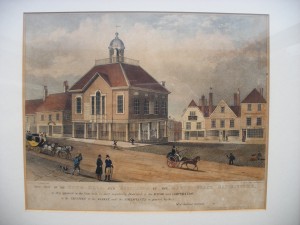
Robert Cottle's view of the Market Place, Basingstoke, dated 1831. Jane Austen would have recognised the scene, although none of the buildings survives today. The elegant Town Hall, built in 1657, was soon to be demolished: it was thought to intrude into the square. The scene of her dancing triumphs, Jane would surely have mourned its loss. The site of her statue, unveiled this week, is in front of the buildings on the right.
My second, more practical suggestion is ‘the raising in appropriate locations in Basingstoke of four dignified statues, based on descriptions and surviving portraits’, to commemorate its most distinguished sons and daughters, namely Walter de Merton, Jane Austen, Thomas Burberry and Margaret Chandler. I even offer appropriate inscriptions for each statue.
Much to my satisfaction, a statue of Jane Austen has been unveiled this very week, by the Countess of Portsmouth, in the Market Place at Basingstoke. There appears to be no inscription, but the text that I propose in my book is as follows:
Remember Jane Austen (1775 – 1817), who shopped here before you. She spent her early years at Steventon, and came to Basingstoke for all necessary purchases. John Ring of Church Street supplied her bed and the portable writing-desk on which she wrote her great novels. These were intended to amuse her family, but have since delighted the whole world. She describes assemblies like those she attended at Basingstoke, where once she danced twenty dances in an evening without any fatigue. When on her travels, she changed coaches here. Sic parvis magna.
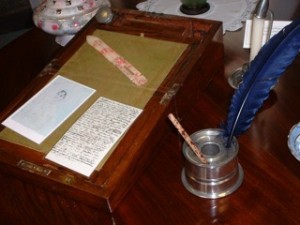
Jane Austen's writing-desk, now preserved in the British Library, was made by John Ring of Church Street, Basingstoke, in 1794. On it, she was to compose every one of her great novels. There's a 'contribution to world culture' if ever there was one!
The position of the new statue is only yards from the site of the old Town Hall where those assemblies took place. The Crown Inn, where she often changed coaches, is only a little further away. Most of her shopping would have taken place within a hundred-yard radius.
I look forward to the raising of the other three statues.
